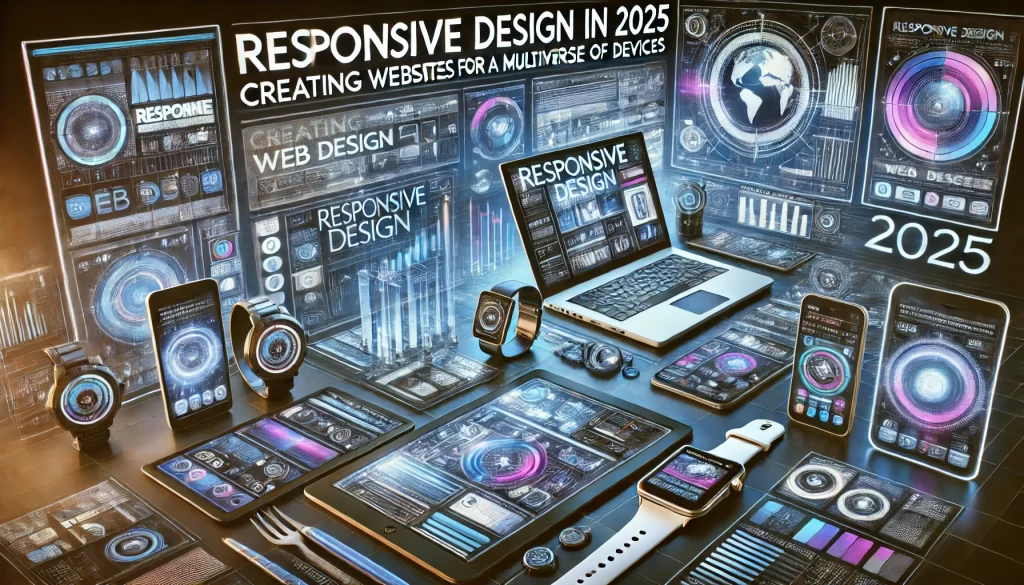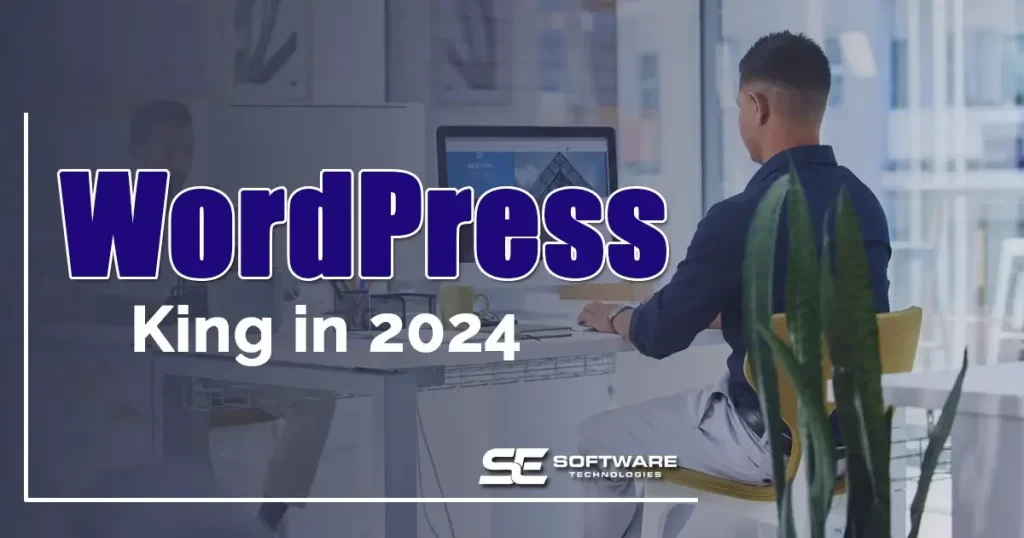Introduction Responsive Design in 2025
As we step into 2025, the landscape of responsive design is entering a transformative phase. The digital world is witnessing an unprecedented growth in device diversity, from smartphones, tablets, and laptops to wearable tech, smart appliances, and even augmented reality (AR) devices. A responsive design that can adjust to this multitude of devices is now more crucial than ever. But traditional responsive frameworks, once groundbreaking, are no longer enough. In 2025, artificial intelligence (AI) is stepping in to revolutionize responsive design, creating websites that are not only adaptable but also intelligently optimized for each unique user experience.
This blog explores how AI is playing a pivotal role in shaping responsive design in 2025, the exciting challenges and opportunities in crafting websites for an ever-growing multiverse of devices, and what businesses need to know to stay ahead in this evolving digital era.
The Shift in Responsive Design: From Static to Smart
Responsive design initially focused on adapting content layout to screen size. This approach allowed websites to resize and reposition elements dynamically, ensuring usability on various devices. However, with the explosion of connected devices, this one-size-fits-all approach to responsiveness faces challenges. As we enter 2025, AI offers a solution, enabling responsive design to be more than just “adaptive” but truly “smart.”
AI-Driven Content Adaptation
AI can analyze user behavior, device specifications, and even real-time environmental factors to determine the most suitable layout and content format. For instance, a user accessing a website from a smartwatch might need a simplified, highly visual experience, while someone using a desktop could be presented with a more detailed layout. AI’s adaptability allows it to detect these needs instantly and adjust the interface for maximum relevance and usability.
Predictive Layouts Based on User Preferences
With AI-driven analytics, websites can learn from users’ past interactions and predict their preferences. By 2025, this predictive power enables websites to optimize layouts in real-time, offering users a customized experience each time they visit a site. For example, an e-commerce website might place frequently browsed items at the top for repeat visitors, or a content site might prioritize articles based on the user’s reading history.
Device Diversity in 2025: A Multiverse of Possibilities
The “multiverse of devices” in 2025 includes everything from foldable screens and virtual reality (VR) headsets to voice-activated smart mirrors and even holographic displays. Each device introduces unique interaction patterns and user expectations. A successful responsive design must now consider not only screen size but also input methods, user context, and device capabilities. AI proves invaluable in making these considerations.
Key Trends in Device Interaction
Foldable and Roll able Displays
Devices with foldable or roll able screens require websites that can adjust content flow as the screen’s dimensions change. AI can automatically detect such changes, adjusting content in real-time without compromising on readability or design integrity.
Wearables and Voice Interfaces
As more users interact with websites through voice commands and smartwatches, responsive design must accommodate voice-activated navigation. AI-driven voice interfaces can detect intent and present streamlined responses for a smoother experience.
Augmented and Virtual Reality
AR and VR are pushing the boundaries of digital interaction. In 2025, responsive design is integrating 3D models and immersive elements that adapt to users’ devices, whether it’s a VR headset or an AR overlay on a smartphone. AI can personalize these experiences by recognizing individual user environments and customizing content accordingly.
AI’s Role in Optimizing User Experience (UX) Across Devices
AI’s contribution to responsive design in 2025 isn’t limited to layout adjustments; it extends to enhancing the entire user experience. By leveraging machine learning and natural language processing, AI can create interfaces that are intuitive, contextually aware, and even emotionally intelligent.
Personalization with Machine Learning
Machine learning models analyze user data to understand patterns and preferences. For instance, in 2025, AI might recognize that a user frequently switches between devices. The AI can then synchronize their website preferences across devices, ensuring continuity in the user experience.
For businesses, this means they can provide seamless and frictionless interactions, regardless of whether users switch from their tablet to a VR headset or a desktop. AI can adjust content delivery based on the device, offering a cohesive experience across different touch points.
Adaptive Loading for Speed and Performance
With AI-driven adaptive loading, websites can selectively load elements based on device capability, network speed, and user behavior. A mobile user on a slower connection, for example, may see optimized, compressed images, while a user on a high-speed network might experience richer, high-resolution graphics. This intelligent content delivery not only improves loading times but also enhances overall user satisfaction.
Responsive Design and SEO in 2025
In 2025, search engines are increasingly favoring websites that offer exceptional user experiences across devices. Google and other search engines are leveraging AI to evaluate website responsiveness, rewarding websites that adapt seamlessly to different devices with higher rankings.
SEO Adaptation to Device Context
AI in responsive design helps tailor SEO strategies to various device contexts. For example, AI can analyze device trends and adjust keywords based on voice search patterns commonly used on wearables. A voice query on a smartwatch may differ significantly from a text query on a desktop, and AI can optimize SEO elements to align with these variations.
Content Delivery and Accessibility
Another essential aspect of responsive design in 2025 is accessibility. AI can help identify accessibility issues and adjust elements to make websites more inclusive. For instance, voice-enabled descriptions for visually impaired users and intuitive navigation for all age groups are becoming standard expectations. AI can dynamically enhance or simplify site features based on accessibility needs, making websites universally accessible.
Responsive Design Beyond Visuals: Emotional and Contextual Intelligence
2025 marks a shift towards emotionally and contextually intelligent responsive design. AI allows websites to gauge user sentiment and context, creating designs that resonate emotionally with users. For instance, AI-driven emotional intelligence can detect when users are frustrated by specific design elements (like complex forms or difficult navigation) and adjust the layout in real-time for a smoother experience.
Case Study: A Retail Experience Enhanced by AI in 2025
Imagine a user shopping for New Year gifts on a retailer’s website. AI can detect signs of holiday stress through rapid navigation or abandoned carts. By offering gentle reminders, simplified checkout options, or even small incentives, the AI-driven design helps create a more positive user experience, increasing conversions and fostering customer loyalty.
The Importance of Real-Time Analytics in Responsive Design
Real-time analytics provide insights into how users interact with websites across various devices, allowing for continuous improvement in responsive design. In 2025, AI-powered analytics tools enable designers to monitor and refine layouts dynamically.
Real-Time Adjustments with AI
For instance, if a user opens a website on their tablet and encounters issues with a specific layout element, real-time analytics can detect this and adjust the design for future users on similar devices. This constant optimization ensures that responsive design stays relevant and efficient as device trends evolve.
Preparing for New Year 2025 and Beyond: Future-Proofing Your Website
With each New Year, we witness advancements in technology and shifts in user expectations. To prepare for 2025 and beyond, businesses must adopt AI-driven responsive design strategies that cater to the multiverse of devices and anticipate future trends.
Some considerations for future-proofing websites include:
- Embracing cross-device fluidity by enabling seamless transitions between devices.
- Leveraging AI for content personalization that resonates with users on an emotional level.
- Prioritizing accessibility and inclusion to ensure a broad, diverse user base can enjoy the site equally.
- Implementing real-time updates through AI analytics, ensuring that websites stay optimized and relevant.
Conclusion
Responsive design in 2025 goes beyond simply resizing images or adjusting layouts. AI empowers responsive design to be predictive, emotionally intelligent, and highly adaptable, meeting the diverse needs of a growing universe of devices. As businesses navigate the evolving digital landscape, those embracing AI-driven responsive strategies will be well-positioned to offer unparalleled user experiences across smartphones, wearables, VR headsets, and future devices yet to be invented.





